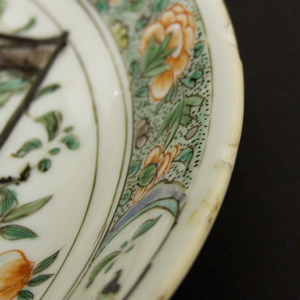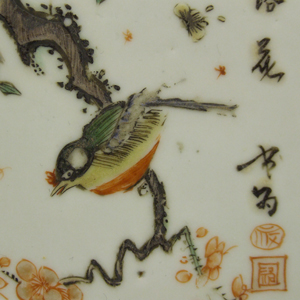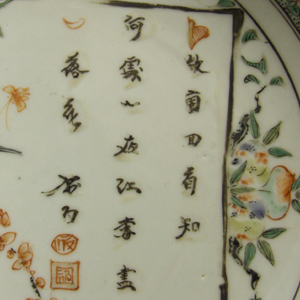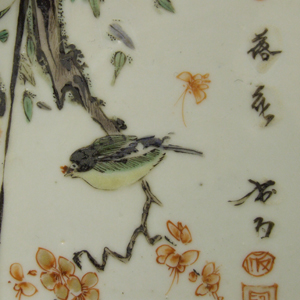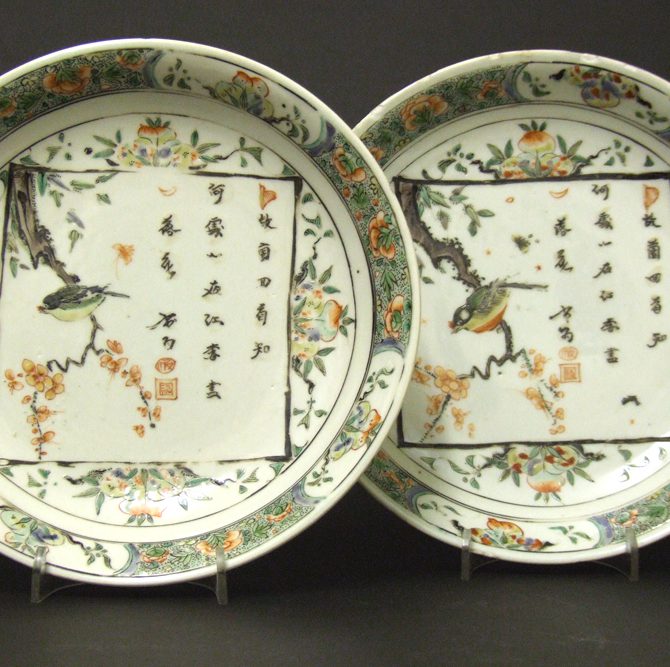
KANGXI 1662 – 1722 Famille Verte Porcelain
A Pair of Kangxi Famille Verte Porcelain Saucer Shaped Dishes c.1690-1720. The Design Consists of a `Painting` Laid Down in the Well of the Dish, its Corners Touching the Inner Concentric Ring. The Square Frames a Bird on a Prunus Tree with a Butterfly Near by, to the Right is a Three Line Poem Ending with a Circular and Square Seal. The Four Sides of the Inner Picture are Draped with Fruiting Branches. The Four Cartouches within the Seeded and Flower Ground Are Similarly Decorated. The Backs are Left Plain.
SOLD
- Condition
- In good condition, one dish has a glaze chip to the front c.5 x 3 mm and some rim fritting with a tiny shallow chip to the back c.3 x 2mm. The other dish has less fritting, most of which is confined to the back of the rim. Both dishes have very minor wea
- Size
- Diameter : 20.5 cm (8 inches).
- Provenance
- N/A
- Stock number
- 23400
Information
Plum Blossom :
Plum Meihua is one of the most important plants in Chinese art. Their flowers grow on knurled old angular branches, the flowers are fragile and pure, so they can be a symbol of vigour in old age as well as purity. The tree is the first to flower after the long hard winter, symbolically it can represent perseverance as well as renewal. This meaning is enhanced by a background of cracked-ice, the design can be seen as representing the end of winter and the beginning of spring with the ice of winter cracking to reveal a new year dawning. Branches of plum blossom convey the `Five Blessings` Meikai wufu, longevity, wealth, health, love of virtue and a peaceful death. The number five, an auspicious number to the Chinese, is taken from the five petals of the plum flower.
